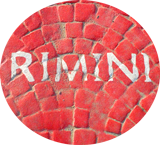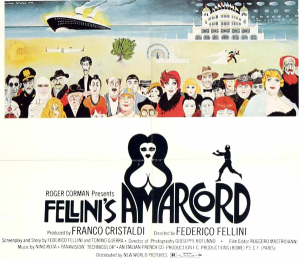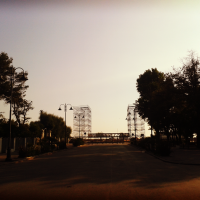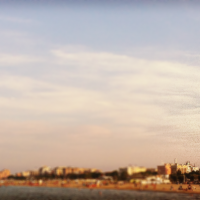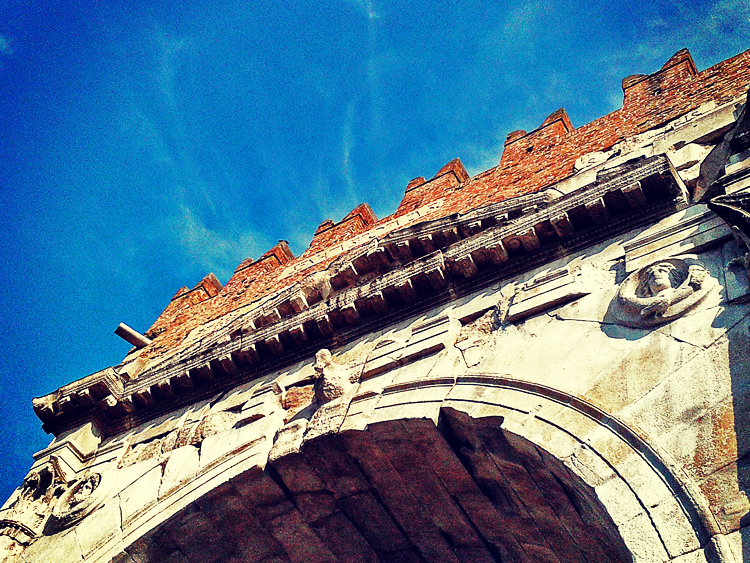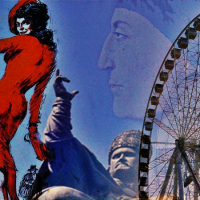The Gambalunga Library
Walk into the impressive Gambalunga library and you are confronted by an impressive mix of the 17th Century and the 21st. The Palazzo Gambalunga (Via Gambalunga 27), that houses the library, was built between 1610 and 1614. THe library itself contains a huge amount of items (over 200,000 books alone) that make up the prestigious Gambalunga collection – including rare manuscripts, 16th Century editions, and periodicals dating from the 1600s through to the present day. At the same time the library has always been a place of innovation – it was the first public library in Italy, public in the sense that it was run by the public authorities and open to the public – and in the 21st century it’s a free wi-fi zone, allowing library users to access the net free of charge with their laptops.
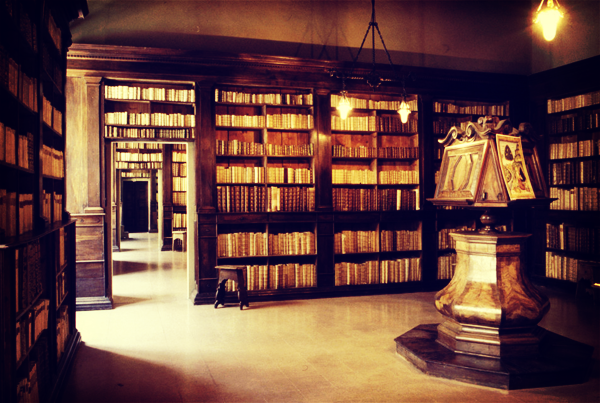
Alessandro Gambalunga
Born in 1554, Alessandro Gambalunga was the son of a succesful Merchant (himself the son of a Lombard builder who made a fortune as a merchant). Gambalunga, in 1583 became the family’s first ‘professional’, graduating with a degree in civil and canon law from the University of Bologna. Gambalunga set up home in Rimini, building the majestic Palazzo Gambalunga in 1610, at a cost of 70,000 scudi. Estimating the value of a single scudo is no easy task, as their were different variants throughout Italy of this ‘official’ gold coin. To give a rough idea of worth, though, one can point out that in the same period Cardinal Scipione Borghese was paying the Bolognese Artist Guido Reni a salary of 9 scudi monthly, plus a 50 scudi allowance for annual
rent1.
The Palazzo was, as was fashionable at the time, inspired by classical architectural principles. It has a large entrance that opens up into a beautiful courtyard with a 17th century well at its centre (actually placed there in 1928). Originally the ground floor housed stables,and workshops. On the uppermost floor were store-rooms (for grain and foodstuffs etc.), and the servants’ quarters. The first floor – or piano nobile, which now hosts the library, was home to Alessandro and his wife Raffaella Diotallevi. In their luxurious appartments Alessandro hosted a small ‘academy’ of local artists, academics, and intellectuals who shared his intellectual passion and curiousity.
In 1617, two years before his death and when it was clear that he would have no direct heir, Alessandro dictated his will to a notary in Pesaro, leaving behind his Palazzo and equally importantly his huge collection of manuscripts and books, to the city of Rimini. In his will he stipulated a salary and working hours for the librarian (50 scudi annually). With one eye on posterity, Gambalunga’s generous donation to the city has been partly repaid by adding his name to the city’s history – the library and Palazzo now find themselves on Via Gambalunga.
The Collection
Gambalunga bought most of his collection in the famous book markets in Venice, and had them transported to Rimini by sea. He employed his own personal librarian to bind, repair, and catalogue the works. The initial collection bequeathed by Gambalunga was eclectic, with works pertaining not just to law, but also to the classics (with a particular predisposition to Cicero), to Italian literature, and works from all over Europe. There are manuscripts in Greek, Latin, Hebrew, Arabic, Armenian, and Tamil! Over the centuries, the library has received donations from patrons (including works from church benefactors) that have increased the size and breadth of the collection.
Today’s library has a collection of over 226,000 books, over 60,000 of which can be classed as rare. Amongst these 60,000 are over 380 incunables (that would be a book printed before 1500, between you and I), and over 5,000 16th Century editions. The collection has a large print collection as well (mainly from the 17th to 19th Centuries).
Ezra Pound and the closed library
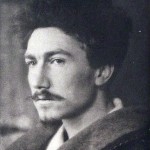 Ezra Pound, the American poet first visited Rimini briefly, with his wife, in 1922 – stopping just long enough to become intrigued by the Tempio Malatestiano and the figure of Sigismondo Malatesta. A year later Pound returned – alone – to conduct some research for what would become his Malatesta Cantos. He wrote, angrily, to his wife on his arrival “Blood and thunder. Library closed at least until the 20th as the damn custode has flu & the boss is too lazy or has to teach physics elsewhere”. Pound headed to Pesaro for a week, and on his return to Rimini the owner of the Palace hotel, where he was staying, offered to kick up a fuss if the library weren’t open – “he is a noble fascist”, remarked Pound who was infamously enamoured with Mussolini’s regime.
Ezra Pound, the American poet first visited Rimini briefly, with his wife, in 1922 – stopping just long enough to become intrigued by the Tempio Malatestiano and the figure of Sigismondo Malatesta. A year later Pound returned – alone – to conduct some research for what would become his Malatesta Cantos. He wrote, angrily, to his wife on his arrival “Blood and thunder. Library closed at least until the 20th as the damn custode has flu & the boss is too lazy or has to teach physics elsewhere”. Pound headed to Pesaro for a week, and on his return to Rimini the owner of the Palace hotel, where he was staying, offered to kick up a fuss if the library weren’t open – “he is a noble fascist”, remarked Pound who was infamously enamoured with Mussolini’s regime.
Pound’s work has long been eclipsed by the propoganda work which he undertook for the fascists during the war – work for which he was indicted by the US goverment on a charge of treason. Pounds most famous work, The Cantos, though remains one of the most formidable and important works of the modernist movement which he helped start. With its wide concerns on art, culture, and the role of patronage (for example, in the figure of Sigismondo Malatesta) it has been described by Michael O’Driscoll as “A memorial to archivists and librarians”. Fitting then that work was undertaken on the poem in the Gambalunga Library.
Federico Fellini’s Amarcord
It’s interesting that Pound should lament that the director of the Library was off teaching physics somewhere, as during the fascist period the Palazzo Gambalunga also hosted a secondary school, on the top floor. It was in this school that Rimini’s famous film director went to school (Guida alla Rimini di Fellini – Giuliano Ghirardelli, Panozzo Editore).
Knowing that beneath them lies one of the most prestigious libraries in the country adds a whole new dimension to the school scenes in Amarcord
Other famous visitors to the Library
Ambroise Firmin Didot, the son of famous French publisher and Typographer Firmin Didot, was a diplomat and and famous book collector. He inherited his father’s publishing business in 1827 along with his brother Hyacinthe. No doubt he could have related well to Alessandro Gambalunga – he himself had a large collection, and pulbished the immense works Bibliothèque des auteurs Grecs, Bibliothèque des auteurs Latins, and Bibliothèque des auteurs français. Firmin-Didot was the first person to discover the position of pergamacum.
Another visitor of note was the famous art historian Aby Warburg (a member of the famous Warburg banking family). Warburg wrote his doctoral thesis on Sandro Botticelli’s The Birth of Venus and Primavera. WHile his work, while in Italy, generally centered on Florentine artists, he visited the Gambalunga library for research purposes a number of times.
The library today
The library today remains at the heart of Rimini’s cultural life. Alongside the actual library, the Palazzo Gambalunga is host to a special children’s library, the cineteca, and various exhibition spaces and lecture rooms.
During the summer there are also guided tours on offer (along with the City Museum).
Notes:
1 Scrambling for scudi: notes on painters earnings in early Baroque Rome –
Richard E. Spear, The Art Bulletin (june 2003)
2 Review of Ezra Pound and the Monument of Culture: Text, History, and the
Malatesta Cantos by Lawrence S. Rainey – Tim Redman, South Central Review (Winter
1993)
Opening Hours
The Library is open Mon-Fri 8.00-1
19.00 and Saturday 8-13.00.
The Mediateca, including internet access is open Mon-Wed-Fri between 16.00-19.00 and Tue-Thurs-Sab between 10.00-13.00
